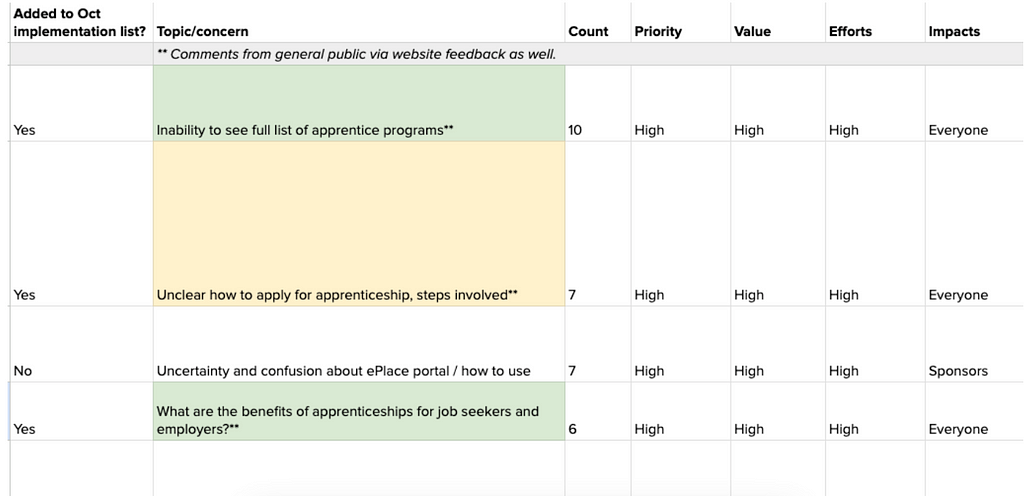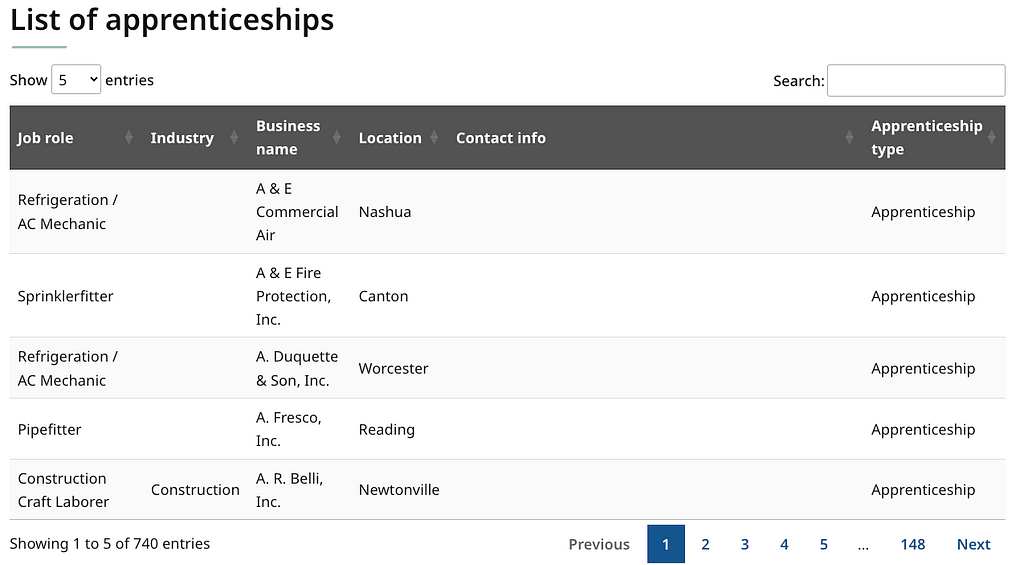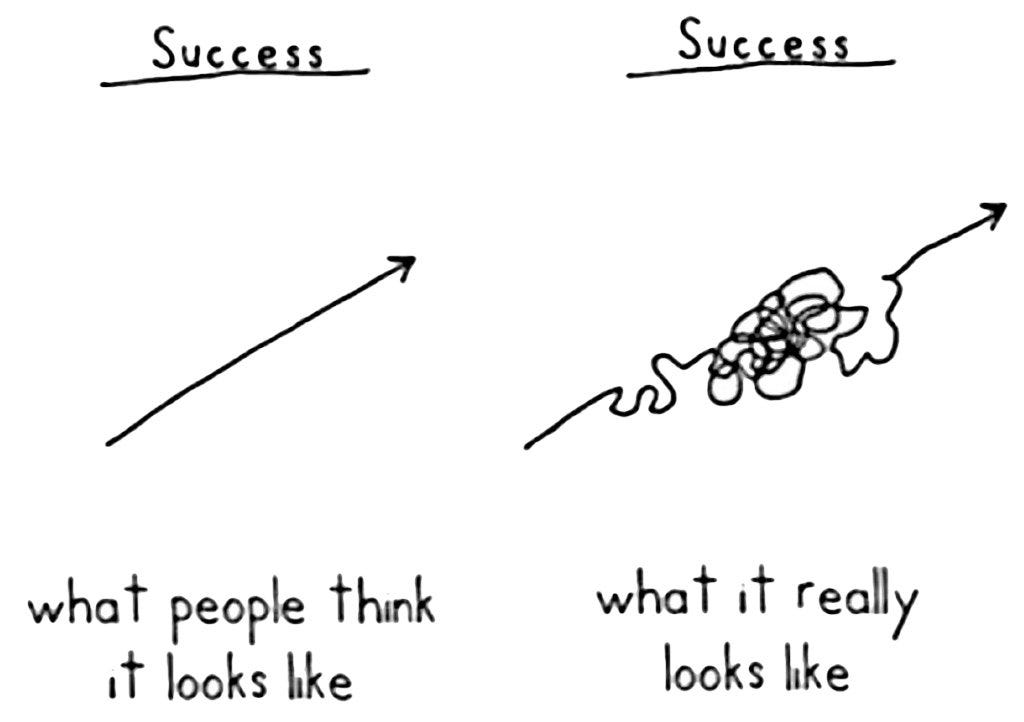On the complexity of black-and-white to the simplicity of the 16,777,216 possible colors of RGB
The race for perfection is unending and impossible. Stop running.

The headline sounds a bit bigger than the topic of user experience.
And truthfully, it is.
The struggle for perfectionism is uniquely human, and its pursuit is exhausting and never-ending. Between social media, our innate competitiveness as human creatures, and a myriad of other things, it’s not hard to understand how common it is.
From an early age, we’re told to work hard and pull ourselves up by our bootstraps. We’re fed stories of people who’ve overcome hardship to climb to the top of whatever proverbial mountain where they want to reside.
In a noisy world, it feels like we’re being told to buy more, try harder, and be better.
It’s not only tiring, but it also impacts our happiness and satisfaction with life.
Start with iteration
We mostly know what it takes for a project to run smoothly.
And would it be nice if we had every duck in a row, all the boxes checked off, access and endless resources, money, and time to do the things we need to do to make a perfect digital experience?
Hell yes.
And that’s where we get in trouble.
Because we know that all projects lack perfect. And as a result, we focus on the ideal and not the good enoughs.
The truth is, in addition to being humans striving for perfection, we’re also impatient. We want everything done correctly, perfectly, yesterday. We want to burn down the house (or website) and build from scratch with perfect interfaces and perfect copy.
So much of our lives in content — whether strategy, researching, writing, or UX design — comes down to small-step changes and improvements. Even when we prefer big, sweeping improvements.
I have related this in the past to home improvement shows, and you know one or many of these:
- Family wants to update their home to put on the market.
- They give the designer x-amount of money to do the stuff.
- The designer hits snags along the way, and they have to make choices about what will or won’t get done.
- In the end, they never get everything they wanted.
As the show wraps up, the designer walks through a beautifully designed kitchen, den, and living room, but apologizes she couldn’t get to the main bedroom.
And my brain — my task-focused, check-everything-off brain — lives in a small state of despair as I wonder how out of place that bedroom looks compared to the rest of the changes.
But with a deep breath, I remember: Iteration.
Iteration isn’t a new concept. In fact, it is specifically a concept. Round one, round two, round three, and so on. Designers do it. Products do it.
But our stakeholders — the folks holding the purse strings for the projects — sometimes don’t want to iterate. The want the best right out of the gate.
So how do you quell their (and your own) anxiety with this? Remember that there’s such thing as good enough. And plan for iteration.
In 2022, we put this practice to the test with the Division of Apprentice Standards for State of Massachusetts.
Apprenticeships are on the rise. Programs are bustling. New college classes, more interested business sponsors, and a long line of curious, driven individuals looking for hands-on training.
But the site wasn’t up to par.
Site visitors consistently noted things they couldn’t find, things they needed. Interviews with future apprentices (and business owners) helped us identify the weakest spots.
But with a small project timeline, and limited resource, we had to make decisions.
So we built a decision matrix:
- What comments did we receive? How many?
- Based on the project goals, how high is the priority? (The more complaints, the higher priority, too.)
- Who does this improvement impact? What’s the value?
- How many resources or how much time is needed to complete it?

The numbers and values assigned aren’t scientific. We had to rely on gut instinct a little to help guide our answers. But such a matrix gave our team (and stakeholders) a clear direction for what to build and where to put our efforts, and also built a backlog of improvements we could continue to make post-launch.
Celebrate the small wins
I won’t wax poetic about the benefits of meditation, but suffice to say, it’s hugely helpful for all of us. Every. Single. Person. It definitely helped me.
(Funny enough, I stumbled on another post I made called “how to master content strategy,” which is exactly the opposite of what I’m saying here. But I digress.)
Mindfulness is all about living and appreciating the present. The right now.
Back to my Massachusetts apprenticeship project.
The folks we interviewed said they wanted a searchable place to find open positions for apprenticeships. Something they could sort. Something responsive.
In the before-world, there was an Excel spreadsheet that listed all this information. But finding it was tough, and have you ever tried to use an Excel document on your phone?
shudders
And thankfully, some investigation found uploading a CSV to the Drupal platform allowed for a filterable, responsible table. Ta-da!

But time for the project was running short. Developers were not at the read to turn this table into something searchable.
In our interviews, future apprentices said it would be great to not only have a list of open positions, but also contact information for companies.
We, sadly, couldn’t make that happen, either. Too many companies to chase down. But we got this far, and we were relieved.
And so were users. Our early results three months after the launch of this new content and functionality proved it:
- Positive website feedback (for this agency) increased by 42 percent.
- New users increased by 85 percent.
- Bounce rate decreased by 50 percent.
High-fives all around. Was the new content perfect? No. Was it improved? Yes. Were users finding content better? Absolutely.
Were we done gathering feedback? No. Is the website done? Absolutely not.
But it was good enough. For now.
And remember: Websites are never done if you’re doing it right.
Keep going
Maybe you keep a spreadsheet matrix of future changes. Maybe it’s a shared whiteboard in your office, or online.
The important thing with everything that we manage in the digital space is to tend your garden.
- Audit your content regularly: The top visited, the lower visited, and the in-between.
- Work with a team, or other resources if have them, to prioritize changes and adjustments going forward.
- Keep an eye on the real folks who use your digital space: Ask for their feedback, talk to them if you can. Let them help you.
- Make little changes. Even one improved page is a page that wasn’t improved yesterday. It doesn’t have to be done in one fell swoop.
- Track, adjust, publish, and track again. It’s cyclical. Keep it going.
Progress is seldom a straight line. Welcome the “good enough” in there sometimes.

Accept and welcome the good enough
To pull this closer to my everyday life, I’ve been trying to take better care of my physical and mental health.
My husband and I have made a habit of long walks and hikes in our county and city parks. We look at flowers. We breathe deep, clean air. We let the sunshine warm our bodies.
And it’s truly a mindful exercise in addition to physical movement.
But last night, for example, I didn’t get my daily walk in. It was maddeningly hot outside from a heat wave, and with no breeze, it sounded miserable. I opted for the treadmill.
I hopped on with my water, my earbuds, and my gusto. I turned it on, and started my walk.
And one mile in, I was…over it. Tired. Sweaty. Just not feeling it. I hopped off, stood with my hands on my hips, and tried to will myself to get back on for at least another mile.
But I didn’t. I took a breath, turned it off, and sat down.
I lamented with my good friend that I didn’t get in my typical 3–4 mile walk like I do almost every day. How I wanted to do more.
“But you did something,” she replied. “That’s great!”
She reminded me of the rough month I’ve had. And applauded me for trying at all, when crawling under a blanket would be acceptable, too.
(Note: Give those friends who help you see clearly a big hug, pat on the back, high-five emoji. Something.)
My mile on the treadmill was good enough. Hell, laying under my covers could be good enough, too.
In our web jobs, we tend to think of the task list ahead. All the things that need to be done to make something perfect. To call it “done.”
Done is fine. And “good enough” means done, too.
Don’t be afraid to set something down to pick it up again in the future when you have bandwidth, time, resources, etc.
Don’t be afraid of good enough.
How to embrace the good enough was originally published in UX Collective on Medium, where people are continuing the conversation by highlighting and responding to this story.


Leave a Reply